We’re Limiting Prescriptions of Opioid Painkillers—But What About Benzodiazepines?

Any time we try to solve the drug problem, we have to look at the whole of the problem, not just one drug.
Have you ever been to a carnival and played the game called “whack-a-mole”? This game consists of a large board with holes through which mechanical moles stick their heads, one after another. With a big soft mallet, the person playing the game attempts to whack down each mole’s head. Points are scored if the player can hit the mole’s head before it disappears.
It’s a fairly fruitless game because there’s ALWAYS another mole’s head poking up through the board. If you successfully flatten one, there’s another about to arrive.
The term “whack-a-mole” has often been used to describe the fruitlessness of attacking only one aspect of the drug and addiction problem. It refers to the tendency of agencies or officials to focus only on a single drug phenomenon—such as opioid overdoses—while largely (or totally) neglecting all other problematic drugs.
Overpowering Focus on the Opioid Problem
In about 2010, national focus swung strongly to the problem of prescription opioids. Three years earlier, three managers of Purdue Pharma, makers of OxyContin painkillers, had pled guilty to illegally misbranding their drug. In other words, they misrepresented the qualities and proper use of the drug for the purpose of vastly increasing their profits.
The illegal marketing of their product started in the mid-1990s. In this chart, you can see how prescription drug overdose figures rose between 1999 and 2010. Take a look at the bright blue line.
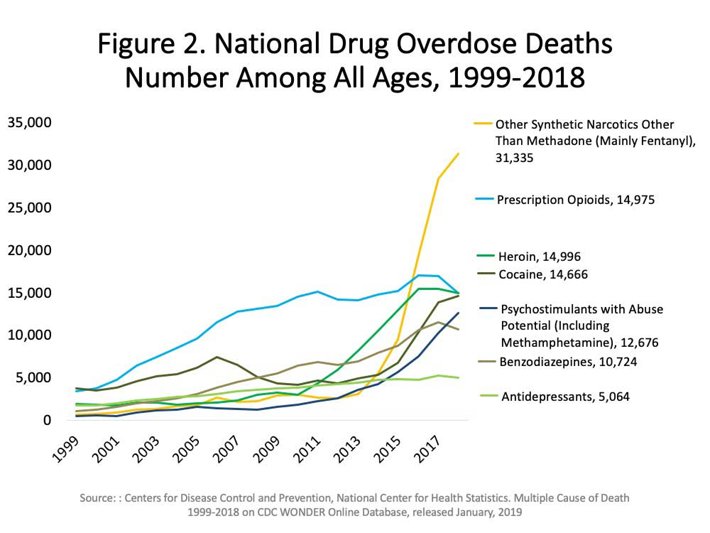
After 2010, enormous energy was devoted to reducing the number of deaths from this class of drug. And to a degree, it started to make a difference. With government demand and leadership, opioid companies began to formulate pills that were harder to abuse. Doctors were encouraged to more carefully dispense opioid painkillers so as to reduce the number of pills being distributed. Doctors who diverted these pills to illicit use were more avidly ferreted out and prosecuted.
A thorough account of actions taken to limit painkillers to those truly in need can be found here.
And, as you can see in the chart above, the number of prescription opioid overdose deaths peaked in 2011 and began to flatten out after that.
However, as you can see in the next chart, the focus on prescription opioids and the limiting of painkillers on the market did nothing to reduce the number of drug overdose deaths. Obviously, much more work is needed. And work of the right kind as well.
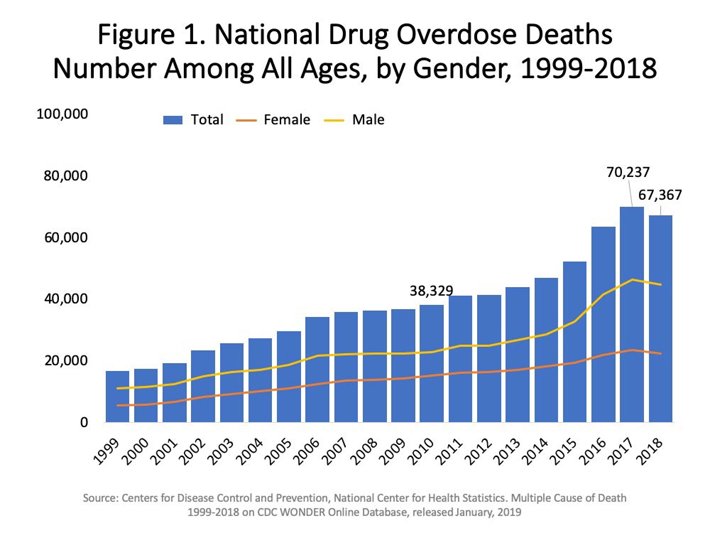
Playing whack-a-mole with one particular drug or class of drugs will never work for long, if at all. The world of drug manufacturing, trafficking and use is constantly shifting. When one drug falls out of favor or is forced off the market, some other drug will take its place.
Benzodiazepine
In recent years, one class of prescription drug that has been seen far more frequently on the illicit market is the benzodiazepine group. Here are the three most common types of this anti-anxiety drug:
- Alprazolam (commonly sold as Xanax)
- Diazepam (commonly sold as Valium)
- Clonazepam (commonly sold as Klonopin)
In this chart, you can see the increase in the number of samples of this drug sent to forensic labs for analysis. Follow the golden-brown line to see how benzodiazepines samples rose as oxycodone (OxyContin) samples fell.
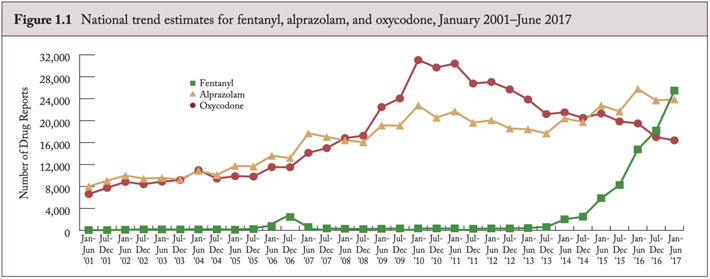
Why Do People Want to Abuse Benzos?
Many people who abuse opioids like to add benzodiazepines to the mix because benzos give an opioid more “kick.” Drug-seeking patients may ask a doctor to prescribe both an opioid and a benzodiazepine and, in fact, this is a common combination handed out by unscrupulous doctors at “pill mills.”
On the other hand, taking these drugs together is extremely dangerous as the combination increases the risk of overdose death beyond the danger of taking either one by itself. And yes, a fatal overdose on benzodiazepines alone is possible.
Significant Study from the Centers for Disease Control and Prevention
In early 2020, the CDC published the results of an analysis of recent benzodiazepine prescribing and use. This report notes that for every 100 doctor visits by adults in America, 27 of them resulted in prescriptions for a benzodiazepine. Even worse, this analysis showed that one-third of these visits also resulted in a prescription for an opioid.
Why is this so problematic? In addition to the risk of overdose either alone or with an opioid, benzodiazepines are addictive when taken for a prolonged time.
Also, you have to ask yourself if this many Americans should be taking an addictive drug that can cause an overdose death. Are there better, non-addictive solutions to anxiety or other problems for which this pill is being prescribed?
Too Many Prescriptions for Older Americans
An alarmingly high number of elderly people are taking this drug with more women than men being prescribed it. The highest rates of prescribing for both men and women were among the age group 65 and older.
According to the CDC, “In older adults, benzodiazepines have been shown to increase the risk of falls, hip fractures, cognitive impairment, and drug-associated hospital admissions.”
Back to that Whack-a-Mole Concept
While we were focused on opioids only, other drugs made their way to center stage. Illicitly-manufactured fentanyl, for one, and benzodiazepines for another.
That’s the problem with a narrow focus on the drug problem. Any time we try to solve the drug problem, we have to look at the whole of the problem, not just one drug. And really, addressing the whole of the problem necessitates putting attention and finance on preventing people from starting to use drugs at all. If our drug prevention lessons in lower schools and colleges are not sufficient, we risk allowing this problem to continue endlessly.
There must be law enforcement efforts to take these drugs off the market and there must be treatment for those trapped in addiction. But perhaps the best investment of time and money is in teaching young people exactly why they should never touch an illicit drug or misuse a prescription drug. Never, not even once. That way, we eliminate the next generation of addicted individuals while we are also helping those who are addicted to recover their lives.
Sources:
- https://www.drugabuse.gov/related-topics/trends-statistics/overdose-death-rates
- https://www.nflis.deadiversion.usdoj.gov/DesktopModules/ReportDownloads/Reports/11674r1NFLISMidyear2017.pdf
- https://www.narconon.org/drug-abuse/signs-symptoms-benzodiazepine-use.html
- https://www.narconon.org/drug-information/benzodiazepines.html
- https://www.narconon.org/drug-abuse/valium-signs-symptoms.html
- https://www.ncbi.nlm.nih.gov/books/NBK482238/
- https://www.cdc.gov/nchs/data/nhsr/nhsr137-508.pdf
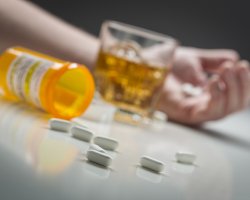
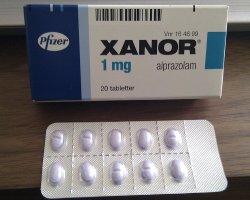
 ®
®